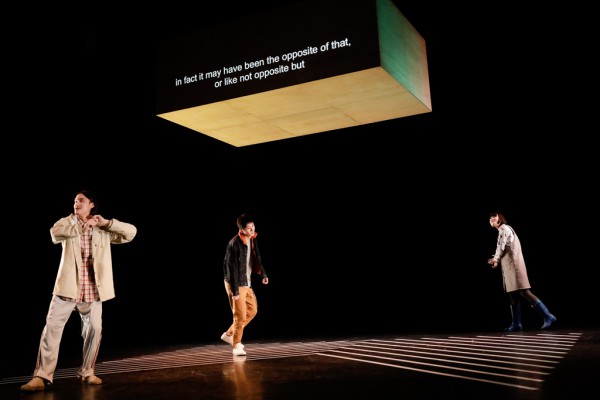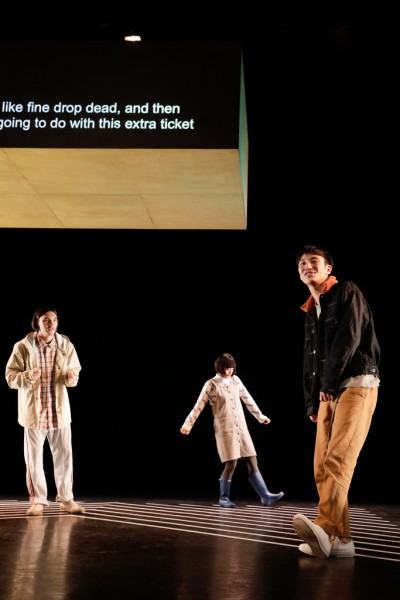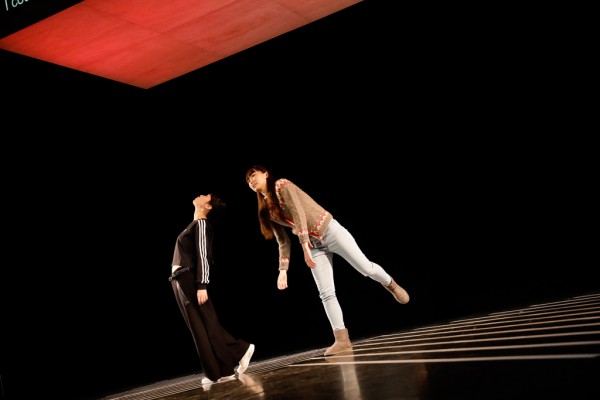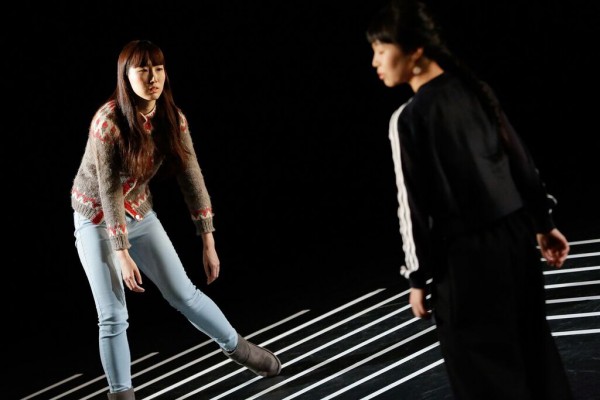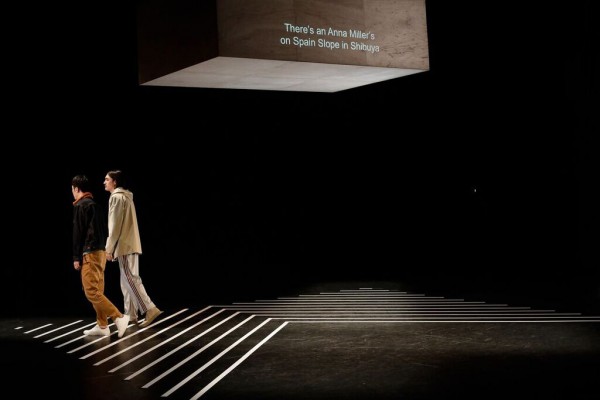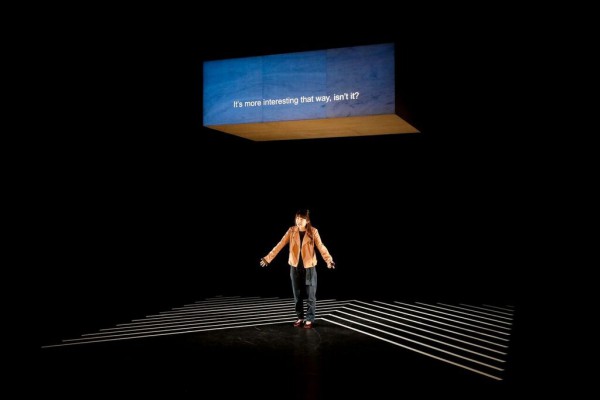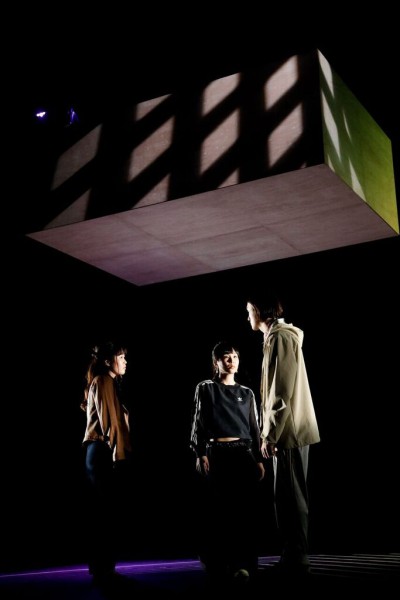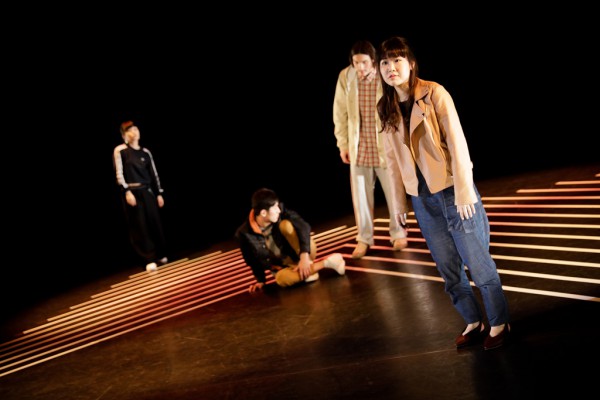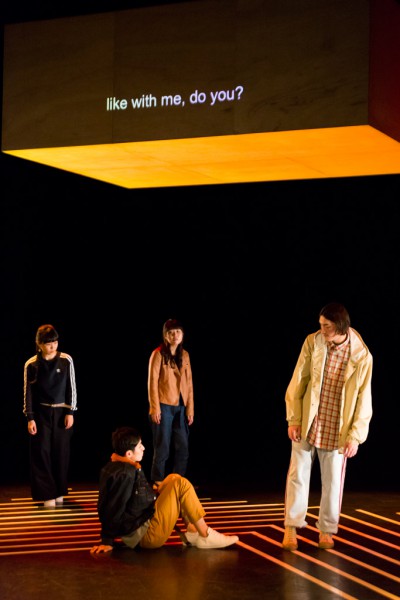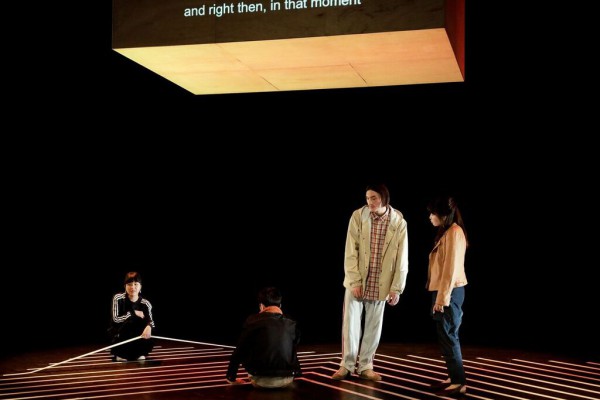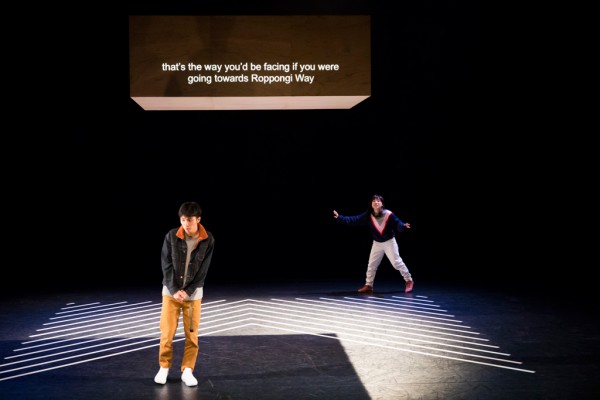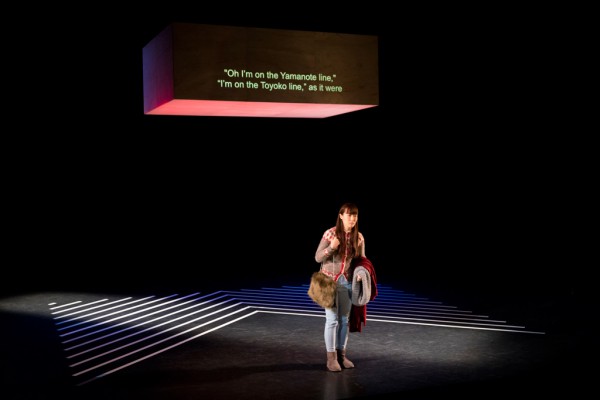主要用途: 舞台美術
製作: 一般社団法人チェルフィッチュ,KAAT神奈川芸術劇場
クレジット: 作・演出:岡田利規 出演:朝倉千恵子、石倉来輝、板橋優里、渋谷采郁、中間アヤカ、米川幸リオン、渡邊まな実 技術監督:鈴木康郎 照明:大平智己(ASG) 音響:牛川紀政 衣装:藤谷香子(FAIFAI) 演出助手:犬養真奈 英語翻訳:アヤ・オガワ 主催:KAAT神奈川芸術劇場 企画制作:株式会社precog
所在・会場: KAAT神奈川芸術劇場 大スタジオ
設計期間: 2017.7-2017.11
施工期間: 2017.11
会期: 2017.12.1-12.20
写真: 前澤秀登
ウェブサイト: https://chelfitsch.net/
チェルフィッチュ設立20周年の節目に、2004年の初演から100回以上世界各国で上演されてきた代表作『三月の5日間』が、俳優を含め一新してリクリエーションされ、その舞台美術を担当した。『三月の5日間』は、アメリカ軍がイラクに向けて空爆を開始した、2003年3月の5日間における東京の若者たちを描く。 俳優は、登場人物の主観で語るのではなく、彼らから聞いた話を、人称を入れ替えながら、観客に向けて説明するように語る。舞台上が渋谷のラブホテルや交差点、あるいは六本木に見えたりと、役者の言葉と動きによって、捉え方が変わるような舞台美術が求められた。 床面には、中心から90度の角度で白いビニールテープを等間隔に貼った。単なる白線から横断歩道が見えたり、白線で区切られた舞台がホテルの壁に見えたり、何もないようにふるまう役者の自由な動きから存在感がなくなったり、白線が自在に変化していく。 渋谷の大型ビジョンやホテルの天井を思わせる、字幕の流れる舞台中央に吊られた巨大な箱は、存在自体が戦争の不穏な空気を感じさせる。 2017年の舞台上に、最小限の要素で2003年3月の東京を立ち上がらせることを目指した。
Principle use: STAGE SET
Production: chelfitsch
Credit: Playwright, Direction: Toshiki Okada Performers: Chieko Asakura, Riki Ishikura, Yuri Itabashi, Ayaka Shibutani, Ayaka Nakama, Leon Kou Yonekawa, Manami Watanabe Stage manager : Koro Suzuki Ligting director : Tomomi Ohira (ASG) Sound director : Norimasa Ushikawa Costume: Kyoko Fujitani (FAIFAI) Assistant Director: Mana Inukai English Translation: Aya Ogawa Planning : precog
Building site: KANAGAWA ARTS THEATRE
Design period: 2017.7-2017.11
Construction period: 2017.11
Production period: 2017.12.1-12.20
Photo: Hideto Maezawa
Website:https://chelfitsch.net/
Commemorating 20 years of activities, chelfitsch Theater Company staged a recreation of one of their signature plays, including an all new cast, and for which we performed the stage design. Following the premiere of “Five Days in March” in 2004, it has since been performed over 100 times in cities worldwide. This play portrays the everyday lives of young people over five days in March 2003, during which the American military began its aerial bombardment of Iraq. Instead of telling their own stories subjectively, the characters tell second-hand accounts of the events, while occasionally breaking character, as if explaining things directly to the audience. Deliverables included a set able to switch viewpoints depending on the words and movements of the actors as the action unfolds in a love hotel in Shibuya, at an intersection, or in the middle of Roppongi. Strips of white vinyl tape were posed on the floor surface at regular intervals at an angle of 90 degrees from the center. The white lines take on a life of their own as their presence can suggest a pedestrian crossing, conjure the walls of the hotel or be negated altogether by the actors moving freely as if nothing was there. The large box hanging above the center of the stage where subtitles appear evoke the large displays in Shibuya and the ceiling of the hotel, while its existence itself makes palpable the unrest surrounding the looming war. We sought to recreate Tokyo in March of 2003 with a minimal amount of elements on a stage in 2017.
